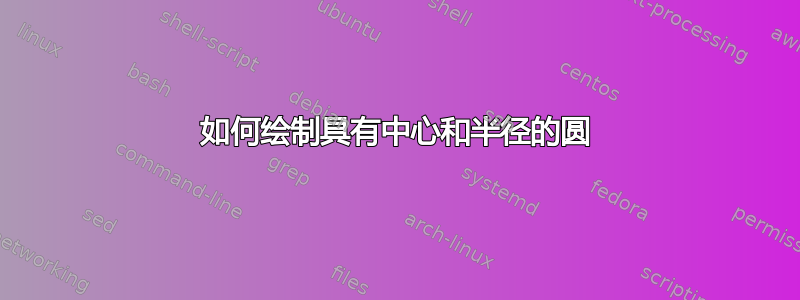
答案1
最基本的方法:
\documentclass[border=1cm]{standalone}
\usepackage{tikz}
\begin{document}
\begin{tikzpicture}
\draw[fill=none](0,0) circle (1.0) node [black,yshift=-1.5cm] {Circle};
\draw[fill=black](0,0) circle (1 pt) node [above] {\tiny P};
\draw[](0,0) -- (1,0) node [midway,above] {$\scriptstyle a$};
\end{tikzpicture}
\end{document}
答案2
有点不太基本的方法...
\documentclass[border=3.141592]{standalone}
\usepackage{tikz}
\begin{document}
\begin{tikzpicture}
\draw (0,0) circle[radius=10mm] node [yshift=-13mm] {Circle};
\fill (0,0) circle[radius=1pt] node [above,font=\small] {$P$};
\draw (0,0) -- node [above,font=\small] {$a$} (1,0);
%
\fill[gray] (3,0) circle[radius=10mm] node [text=black,yshift=-13mm] {Disc};
\end{tikzpicture}
\end{document}
答案3
基本tkz-euclide和一些选项TikZ
\documentclass[margin=1cm]{standalone}
\usepackage{tkz-euclide}
\begin{document}
\begin{tikzpicture}
\tkzDefPoints{0/0/P,2/0/A,6/0/Q,8/0/B}
\tkzDrawCircle(P,A)
\tkzDrawSegment(P,A)
\tkzDrawPoints(P,A)
\tkzLabelPoint[above](P){$P$}
\tkzLabelSegment(P,A){$a$}
\tkzLabelCircle[below=12pt](P,A)(-90){Circle}
\tkzFillCircle[lightgray](Q,B)
\end{tikzpicture}
\end{document}






